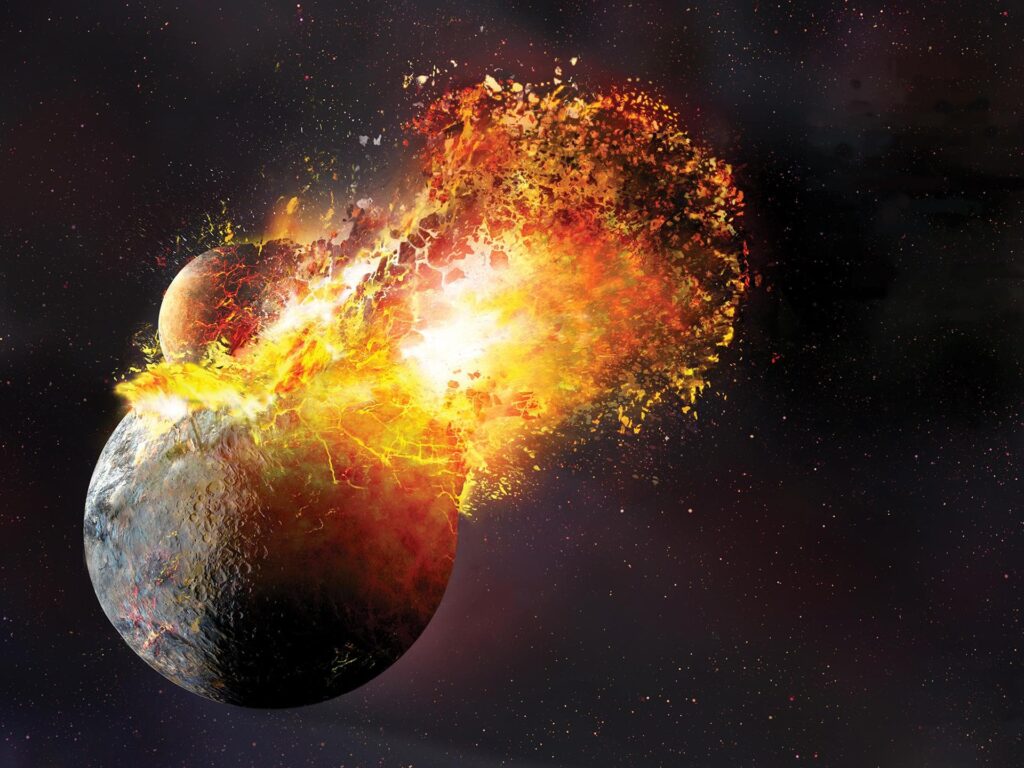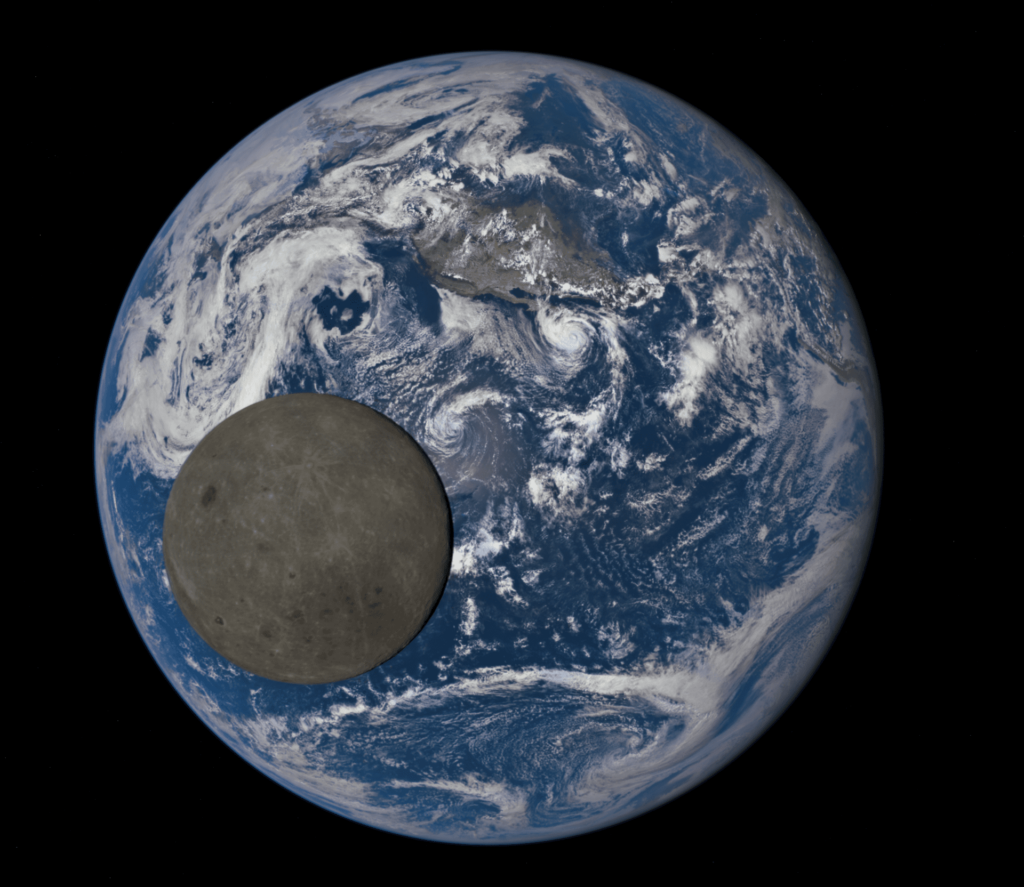Astronomers have proposed a new chronology of the giant impact that led to the formation of the Moon. According to it, it happened earlier than many models predict.
Conflicting lunar chronology
According to the prevailing hypothesis in scientific circles, the Moon was formed when a protoplanet about the size of Mars, commonly called Theia, crashed into the young Earth. As a result of this gigantic impact, a huge mass of fragments was thrown into orbit. Later, they merged together, which led to the formation of the Moon.

The giant collision hypothesis explains many features of the moon very well. But it also has weaknesses, one of which is the chronology of events. It is believed that the most likely cause of the collision was the instability of the orbit of Jupiter, which gravity threw Theia into the inner part of the Solar System. This should have happened during the first 100 million years of the Solar System’s existence. If this orbital instability had occurred later, the trajectories of the inner planets would have been disrupted, and the Trojan asteroids of Jupiter, such as Patroclus and Menoetius (they are one of the goals of the Lucy mission), would not have remained in their positions.
Models show that the collision should have occurred between 37 and 62 million years after the formation of the Solar System. After that, the Moon would take about 10 million years to cool down sufficiently and move from the state of a giant ocean of magma to a body with a solid surface.
However, the geological data paints a different picture. The earliest known lunar rocks were formed much later. The results of the analyses indicate that they crystallized from magma about 208 million years after the formation of the Solar System. Similar rocks formed on Earth after 218 million years.
At the same time, the third dating scheme, based on measuring the decay of Hafnium into Tungsten, again shifts the date of the collision to an earlier date. According to it, the Moon’s core formed about 50 million years after the birth of the Solar System.
The moon is younger than thought
At the 55th Annual Conference on Lunar and Planetary Sciences last month, a new version of the lunar chronology was proposed, taking into account all available evidence. According to it, the giant impact occurred just 50 million years after the formation of the Solar System. The collision was followed by a cooling cycle lasting 10 million years. But then the Moon warmed up again and finally cooled down only after 200 million years.

According to the authors of the new model, the process of reheating the Moon was caused by tidal forces. In their opinion, the orbit of the newborn Moon was unstable and possessed great eccentricity. As a result, tidal forces stretched and compressed it. Similar processes are currently taking place on Io, which is why there are hundreds of active volcanoes on its surface. The cooling process could also have been slowed down due to multiple secondary impacts, when remnants of material ejected during the collision with Theia bombarded the Moon for millions of years.
Earlier we talked about why humanity returned to the moon.
Follow us on Twitter to get the most interesting space news in time
https://twitter.com/ust_magazine


